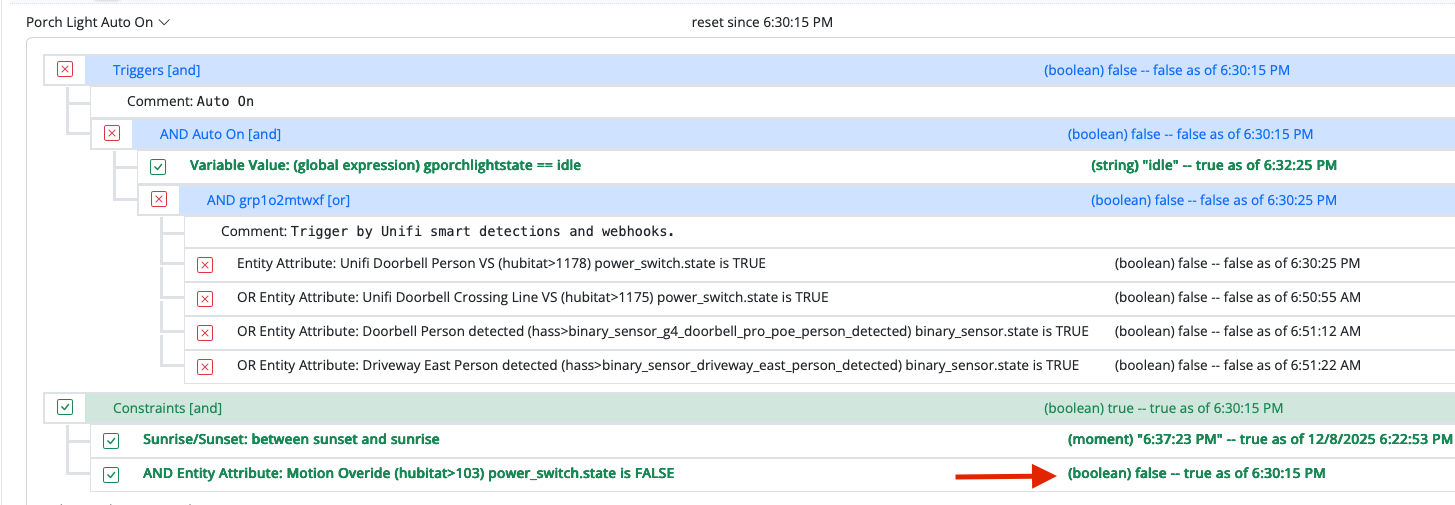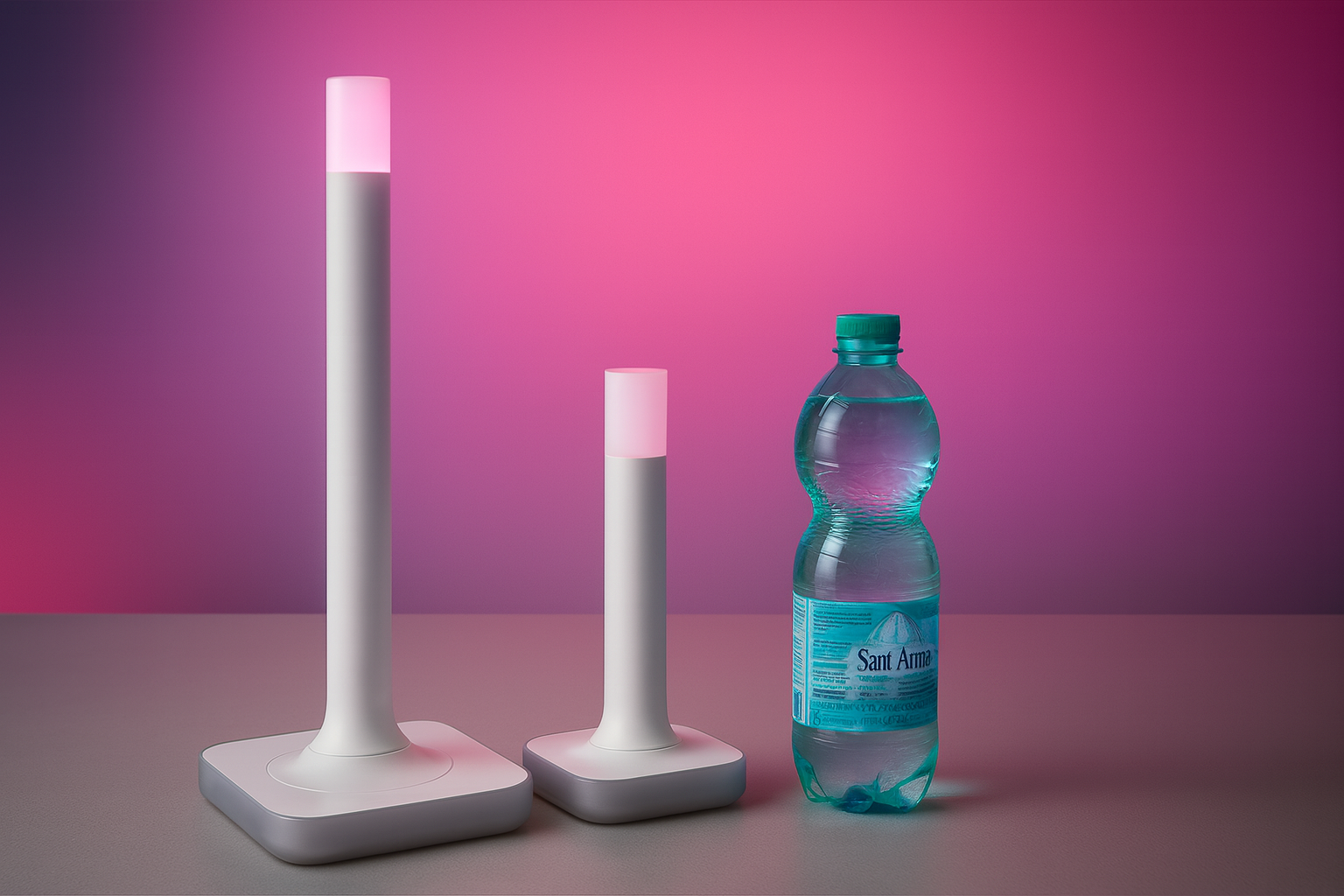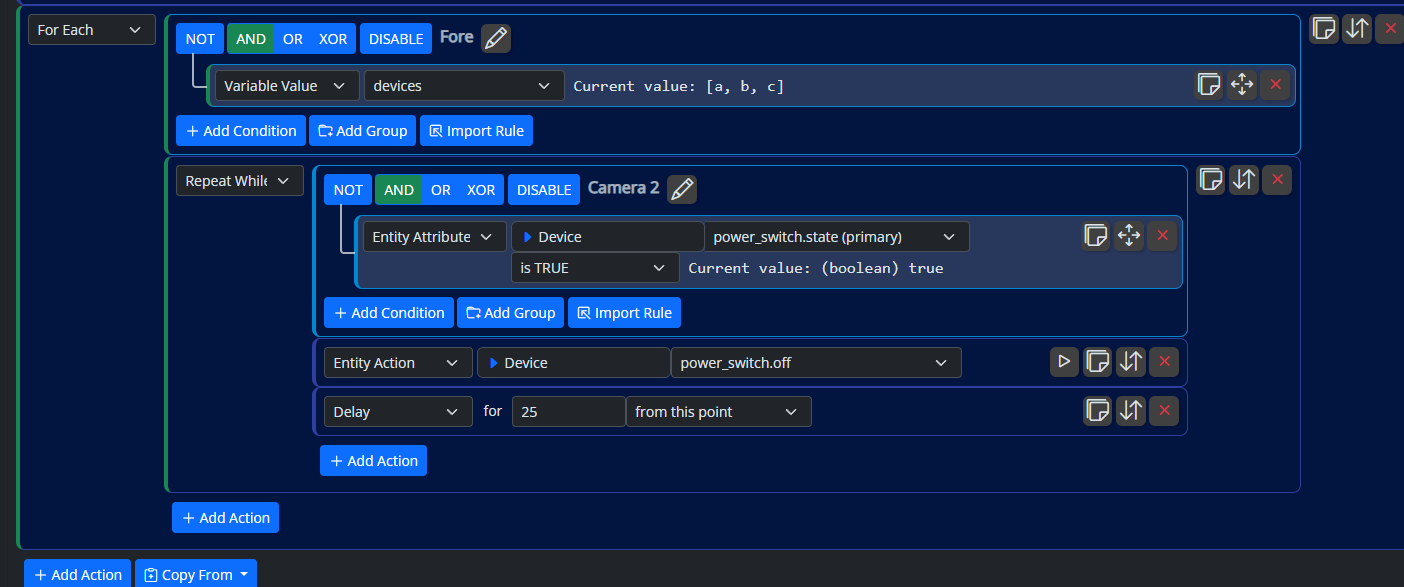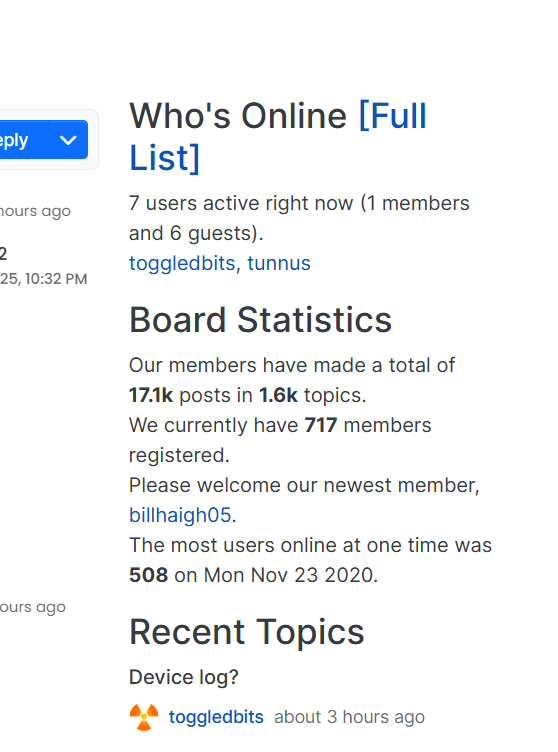G
gratisexcited
@gratisexcited
Another question to the hive mind. Prompted by the fact that I lost yet another z-wave device over the weekend due to a power issue. It looks like z-way server is reporting another device failed (although it's working fine) and message queue is far too long IMHO. Also the failed device has been removed in the expert interface, but still there in the 'normal' one. Sigh.
Currently I have z-wave, Tuya, thinking about Zigbee.... Does anyone use one single protocol for everything? Right now I'm feeling that as the z-wave stuff dies, I'm just gonna replace it with something else....
C
Not really Smart Home stuff, but going to ask as we have smart people...
Bear with me on this one. Asking here because of the font of knowledge!
For many eek years I have had a Virgin V6 box and a Raspberry Pi running Kodi connected to my TV through a cheap *** HDMI switch. It all worked beautifully but the absolutely critical thing was that the TV remote passed the signals back to the Pi to allow remote control of Kodi.
Couple of changes of late:
Installed a soundbar on the TV using the ARC (audio return channel). That then turns the soundbar on and off when the TV turns on and off and the TV volume control controls the soundbar volume direct.
Everything continues to work
Upgraded the software of the Tivo box to Virgin 360. This is literally software only. You get sent a snacky new Bluetooth remote hit 'upgrade' on the screen and off it goes.
Now, things are not playing well. Typically when I turn on to watch Kodi the soundbar comes on (as it should) but the TV either puts out sound through its own speakers and the soundbar, or just the soundbar. It's not possible to control the volume of the soundbar through the TV. Also it's not longer possible to control Kodi using the TV remote.
If I turn the TV360 box off, i.e. power it down, before turning on to watch Kodi, everything is fine.
This makes little to no sense to me. My assumption is that the cheap *** HDMI switch is getting something from the TV360 connection that it didn't used to get when the software was Tivo and that's screwing up the HDMI communications. I'm upgrading the switch to something a little less chap, but wondered if anyone could validate my theory at all?
TIA
C
Obviously a quiet forum, but perhaps it's time
I'm looking at rolling Zigbee into my system, in large part for the Aqara FP300 presence sensors which seem to finally provide a solution to if the wasp is actually in the box.
My current set up is as follows:
One Debian VM on Synology NAS running:
Z-wave Server
Open Luup
Multi system reactor
HA bridge
Mosquito MQQT broker
This machine has a UZB Z-wave stick connected via the USB port on the NAS
Another HAOS VM on the same NAS running HAOS
I've got some older Z-wave stuff that I keep around until it fails.
I have some Tuya stuff integrated in HA
My thought was to get either a SMLIGHT SLZB-06M
or an Aqara Hub M2
Integrate them via Zigbee2MQQT (running on the Debian machine) and then expose them in HA so I can continue to automate in MSR.
Thoughts on which of those devices wold be preferable long term. Both are POE capable which is good. It also appears I could add a USB dongle to the NAS and expose it to the HAOS machine.
Any thoughts from the assembled experts here? TIA
C
at _ClientAPI._commandTimeout (http://192.168.1.100:8111/client/ClientAPI.js:807:179
Seeing this randomly when returning to open browser tab after being away awhile. Once, maybe twice a day.
"What did you do to trigger it?" Literally nothing, just walked away and returned and there it was.
Actions taken in reasonably close proximity to this particular instance of it popping up: I'd restarted the MSR container in Portainer.
I'll try to grab some logs here shortly.
I'm having an issue with MSR's UI being very unresponsive. It started happening a couple days ago and I didn't make any changes that would have caused this except adding some meross lan devices in HA. When I go into an entity action and use the search functionality, it usually will start filtering and then get to a place after a few letters are entered where it will take 30 seconds or more (sometimes minutes) for the UI to show what I am typing. During this time MSR ui is completely unresponsive. I've tried multiple browsers and multiple computers. HA and MSR are both deployed in docker. I have run HTOP on the host and when the problem happens there are no CPU/Memory spikes at all.
From a functionality standpoint MSR is working perfectly. This seems to be an UI issue only.
Do i need to ditch Docker and run MSR on a Proxmox VM? I have both stand alone Docker and Proxmox environments. I dont mind doing that I just want to be able to use the UI again...
Installation method
Home Assistant Container
Core
2025.7.3
Frontend
20250702.3
nothing crazy in the logs except some openweather map stuff that doesn't make any sense as it is working fine in MSR
Any help would be greatly appreciated
Reactor latest-25328-b2ed1365 app 25328 configuration from /var/reactor/config
NODE_PATH /opt/reactor:/opt/reactor/node_modules
[latest-25328]2025-11-30T20:01:53.843Z <app:null> Reactor build latest-25328-b2ed1365 starting on v24.11.1 /usr/local/bin/node
[latest-25328]2025-11-30T20:01:53.844Z <app:null> Process ID 1 user/group 0/0; docker; platform linux/x64 #161-Ubuntu SMP Tue Jul 22 14:25:40 UTC 2025; locale (undefined)
[latest-25328]2025-11-30T20:01:53.844Z <app:null> Basedir /opt/reactor; data in /var/reactor/storage
[latest-25328]2025-11-30T20:01:53.844Z <app:null> NODE_PATH=/opt/reactor:/opt/reactor/node_modules
[latest-25328]2025-11-30T20:01:53.865Z <app:null> Resolved timezone=America/New_York, environment TZ=America/New_York; offset minutes from UTC=-300
[latest-25328]2025-11-30T20:01:53.867Z <default:null> Module i18n v25141
[latest-25328]2025-11-30T20:01:53.867Z <app:null> Configured locale (undefined); selected locale(s) en-US.UTF-8
[latest-25328]2025-11-30T20:01:53.879Z <app:null> Loaded locale en-US for en-US
[latest-25328]2025-11-30T20:01:53.879Z <app:null> Local date/time using configured timezone and locale formatting is "11/30/2025, 3:01:53 PM"
[latest-25328]2025-11-30T20:01:53.889Z <Structure:null> Module Structure v25326
[latest-25328]2025-11-30T20:01:53.890Z <Capabilities:null> Module Capabilities v24312
[latest-25328]2025-11-30T20:01:53.904Z <Plugin:null> Module Plugin v25141
[latest-25328]2025-11-30T20:01:53.923Z <Timer:null> Module Timer v25279
[latest-25328]2025-11-30T20:01:53.924Z <TimerBroker:null> Module TimerBroker v25314
[latest-25328]2025-11-30T20:01:53.927Z <Entity:null> Module Entity v25251
[latest-25328]2025-11-30T20:01:53.929Z <Controller:null> Module Controller v25253
[latest-25328]2025-11-30T20:01:53.930Z <AlertManager:null> Module AlertManager v25318
[latest-25328]2025-11-30T20:01:53.937Z <default:null> Module Ruleset v25283
[latest-25328]2025-11-30T20:01:53.937Z <default:null> Module Rulesets v25141
[latest-25328]2025-11-30T20:01:53.942Z <GlobalExpression:null> Module GlobalExpression v25258
[latest-25328]2025-11-30T20:01:53.953Z <Predicate:null> Module Predicate v25328
[latest-25328]2025-11-30T20:01:53.956Z <Rule:null> Module Rule v25323
[latest-25328]2025-11-30T20:01:53.958Z <GlobalReaction:null> Module GlobalReaction v25292
[latest-25328]2025-11-30T20:01:53.959Z <Engine:null> Module Engine v25325
[latest-25328]2025-11-30T20:01:53.964Z <httpapi:null> Module httpapi v25328
[latest-25328]2025-11-30T20:01:53.972Z <wsapi:null> Module wsapi v25328
[latest-25328]2025-11-30T20:01:53.994Z <TaskQueue:null> Module TaskQueue 24138
[latest-25328]2025-11-30T20:01:53.994Z <VeraController:null> Module VeraController v25141
[latest-25328]2025-11-30T20:01:54.179Z <HassController:null> Module HassController v25325
[latest-25328]2025-11-30T20:02:13.797Z <OWMWeatherController:null> Module OWMWeatherController v25268
[latest-25328]2025-11-30T20:02:13.800Z <SystemController:null> Module SystemController v25323
[latest-25328]2025-11-30T20:02:13.807Z <MQTTController:null> Module MQTTController v22092
[latest-25328]2025-11-30T20:02:20.630Z <OWMWeatherController:CRIT> FetchError: request to https://api.openweathermap.org/data/2.5/weather?lat=xxxxxxxxxx&lon=-xxxxxxxxx&appid=xxxxxxxxxxxxxxxxxxxxxxxxxx&units=standard&_r=1xxxxxxxxxxxxxxfailed, reason: [-]
FetchError: request to https://api.openweathermap.org/data/2.5/weather?lat=xxxxxxxxxxx&lon=-xxxxxxxxxxxxxxxxxx&appid=xxxxxxxxxxxxxxxxxxx&units=standard&_r=xxxxxxxxxxxxxxxfailed, reason:
at ClientRequest.<anonymous> (/opt/reactor/node_modules/node-fetch/lib/index.js:1501:11)
at ClientRequest.emit (node:events:508:28)
at ClientRequest.emit (node:domain:489:12)
at emitErrorEvent (node:_http_client:108:11)
at TLSSocket.socketErrorListener (node:_http_client:575:5)
at TLSSocket.emit (node:events:508:28)
at TLSSocket.emit (node:domain:489:12)
at emitErrorNT (node:internal/streams/destroy:170:8)
at emitErrorCloseNT (node:internal/streams/destroy:129:3)
at processTicksAndRejections (node:internal/process/task_queues:89:21
Build 21228 has been released. Docker images available from DockerHub as usual, and bare-metal packages here.
Home Assistant up to version 2021.8.6 supported; the online version of the manual will now state the current supported versions;
Fix an error in OWMWeatherController that could cause it to stop updating;
Unify the approach to entity filtering on all hub interface classes (controllers); this works for device entities only; it may be extended to other entities later;
Improve error detail in messages for EzloController during auth phase;
Add isRuleSet() and isRuleEnabled() functions to expressions extensions;
Implement set action for lock and passage capabilities (makes them more easily scriptable in some cases);
Fix a place in the UI where 24-hour time was not being displayed.
This post does not apply to users of Intel/AMD-based systems. If you are using a Reactor image tagged latest-amd64 or stable-amd64, then this post does not apply to you. It also does not apply to bare-metal installs; it's for users of docker images on ARM-based systems only (principally Raspberry Pi hosts, but could be others).
After January 15, 2026, I will no longer produce the aarch64-tagged docker image for Reactor. The ARM images will be arm64 for 64-bit operating systems, and armv7l for 32-bit operating systems.
For those of you running a container from the aarch64 image today, this will be a relatively simple change: you just need to switch the image used for your docker container to a differently-tagged image. If you are using docker-compose, then this is a relatively simple matter of changing the image line in your docker-compose.yaml file and then stopping (docker-compose down) and restarting (docker-compose up -d) your Reactor daemon.
But there's a catch... not all of you can safely just switch from the aarch64 image to the arm64 image. And, you can't just trust the output of uname -m, for example, because this exposes the CPU architecture, but not the word size of the OS running on that CPU.
For Raspberry Pi systems, the transition to 64-bit operating systems was long (starting in 2016) and not always obvious — although there was a first "official" 64-bit OS for RPis in 2020, it did not become a default recommendation in the Raspberry Pi Imager until 2021, and then that was only the default for Pi 3/4 systems with >4GB RAM; it was 2022 before it was universally recommended for all 64-bit CPUs regardless of RAM size. Depending on when you first imaged your RPi system and what default you may have been offered/chosen, you could today easily have a 64-bit CPU Raspberry Pi running a 32-bit version of the operating system. Upgrades along the way would not change this; changing it to fully 64-bit requires a full reimage of the system.
To establish if your OS is 64- or 32-bit, log in to your Pi and run: sudo dpkg-architecture -q DEB_HOST_ARCH. If the response is arm64 or aarch64, then you are running a 64-bit OS and you should use the arm64-tagged image. If it's anything else, you are running a 32-bit OS, and you should use the armv7l-tagged image.
pi@rpi4-1:~ $ sudo dpkg-architecture -q DEB_HOST_ARCH
armhf
pi@rpi4-1:~ $ uname -m
aarch64
pi@rpi4-1:~ $
In the example above, the uname command reports that the CPU is 64-bit architecture (aarch64), which is true for the host on which I ran these commands, but the DEB_HOST_ARCH value is armhf, indicating a 32-bit operating system. This system has to use the armv7l-tagged image.
Other systems will have their own ways of determining the word size of the running OS. Since the majority of Reactor users running ARM systems are on Raspberry Pis, I am able to supply the above instructions, but if you happen to have a different ARM system, you'll need to do some web searching to figure out how to expose that information. Or, you can just try the arm64 image, and if it doesn't start up, try the armv7l image.
Remember to always back up your system before making any changes.
For everyone, please make this change as soon as possible, and if you have any trouble finding a working image, please (1) go back to the current aarch64 image; and (2) let me know in this thread along with as much detail about your host system as you can offer (including the output of the dpkg-architecture command mentioned above).
Hi,
I'm in the process of migrating from a Raspberry Pi 4 (ARMv7) to a Raspberry Pi 5 (ARMv8/aarch64), but I’ve run into an issue: there is no proper ARMv8/aarch64 image available.
None of the existing images run on the Pi 5 - they all exit immediately with code 139 (segmentation fault), which typically indicates that the binaries inside the image are not compatible with the ARM64/aarch64 architecture used by the Pi 5.
Would it be possible to publish a correct ARMv8/aarch64 (linux/arm64) image?
Building one should be relatively straightforward using docker buildx with multi-arch support. For example, my own Node.js images are built this way:
docker buildx build --push \
-t <localrepo>/<project>:<tag> \
--platform=linux/arm64,linux/amd64 \
--file ./apps/<project>/Dockerfile .
This produces both the AMD64 and ARM64/v8 variants automatically.
Also, as a side note, it may be best to avoid using Alpine as the base image for the ARM64 build, since musl-based builds often cause compatibility issues and unnecessary headaches. A glibc-based base image (e.g., Debian or Ubuntu) tends to work far more reliably on ARM64, especially for Node.js applications.
@toggledbits - tagging you in case you missed this.
Thanks,
mgvra
Sorry to write here without trying, but I’m flying today.
Am I correct if i say that script action with alarm() makes it possible to execute a reaction in a given interval, lets say 15 seconds or 3.5 minutes?
That sounds amazing, since I’ve used weird tricks, including a custom controller, just to do this.









